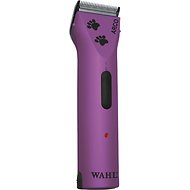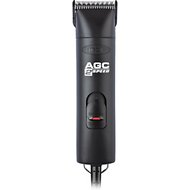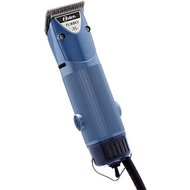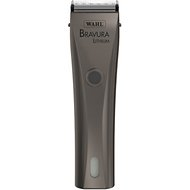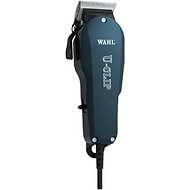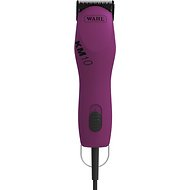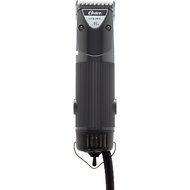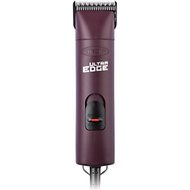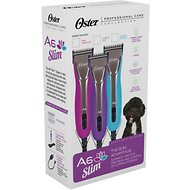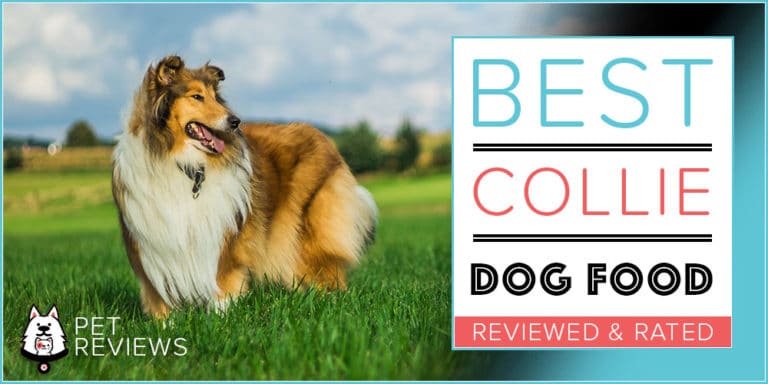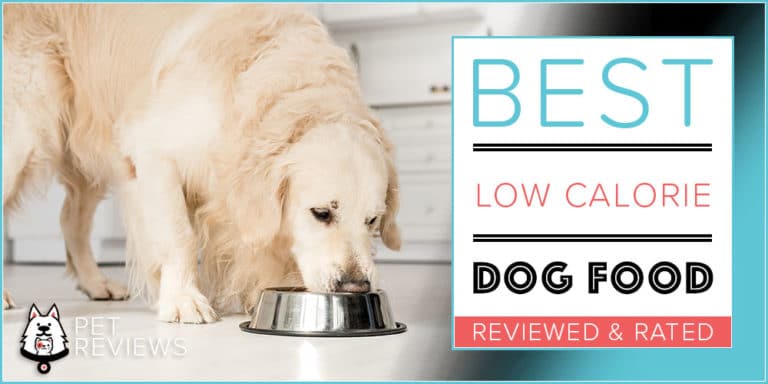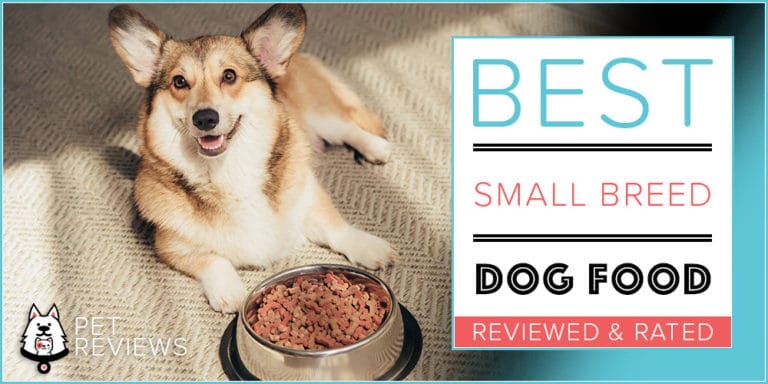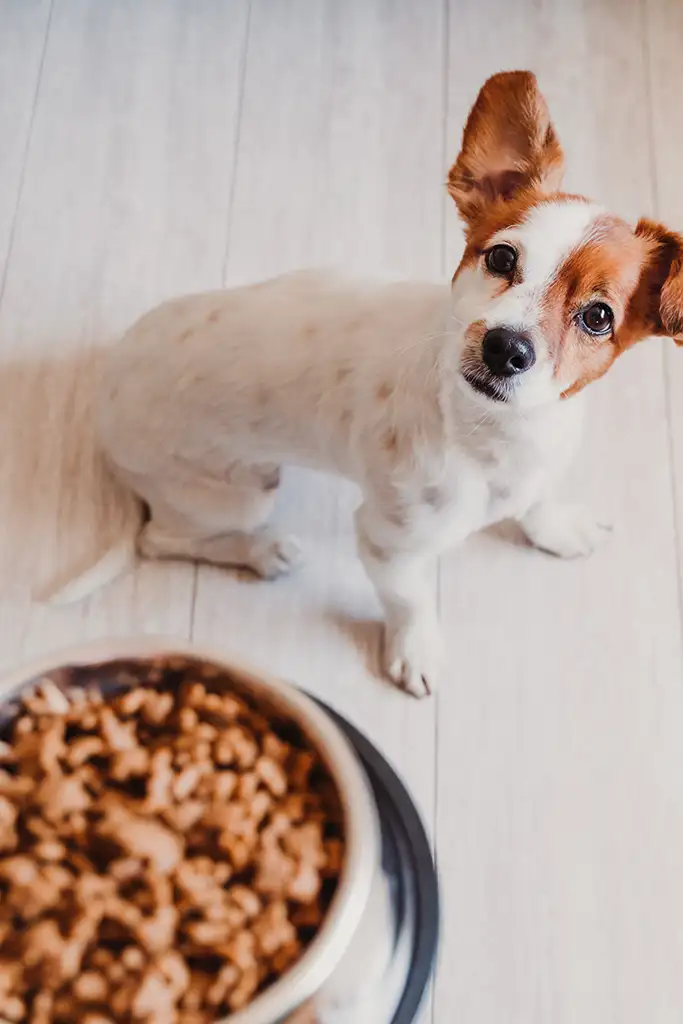9 Best Corded and Cordless Professional Dog Hair Grooming Clippers
Quick Guide
- What is the Best Corded and Cordless Professional Dog Hair Grooming Clippers?
- Key Dog Hair Grooming Clipper Components
- Different Types of Dog Hair Clippers
- The Different Types of Blades for Dog Hair Blades
- The Overall Best Dog Hair Clippers
- 4 More Top-rated Clippers for Dog Hair
- Our Top 7 Tips for Trimming Your Dog’s Coat at Home with Electric Clippers
- Our Dog Hair Clipper FAQs
- Conclusion
No matter what breed of dog you have, making sure your faithful friend is well-groomed will keep him happy and healthy. Poorly groomed or neglected fur can cause matting and also make your dog’s coat an attractive home for parasites, fleas, and ticks.
Depending on the breed of dog you have, it’s not always affordable or practical to take him to a professional groomer regularly. In some cases, doing-it-yourself when it comes to clipping and trimming your dog’s fur is the best option. Choosing the right dog hair clippers for your dog’s coat, and your unique grooming needs will make the process easier and quicker.
In this guide, we’ll cover our top nine picks for both corded and convenient cordless professional dog grooming clippers. Toward the end of the guide, we’ll answer some of the most frequently asked questions when it comes to choosing a good set of dog hair clippers, and the correct process for trimming your dog’s fur. After reading, you’ll know exactly what to do and what you need to get started.
But before we list the top nine dog grooming clippers for dogs of all breeds and coat tops, we’ll first cover the key components of dog hair clippers and the different types of clippers for dog hair that you need to know about to make an informed purchasing choice. There are a lot of different dog grooming devices for sale on the market today, and it can be challenging to know which one to choose. Hopefully, this article will narrow things down for you and make the grooming process more enjoyable for you and your pet.
What is the Best Corded and Cordless Professional Dog Hair Grooming Clippers?
- Wahl Arco Cordless Pet Clipper Kit
- Andis AGC2 2-Speed Detachable Blade Pet Clipper
- The Oster A5 2-speed Pet Clipper in Dark Blue
- Wahl Bravura Lithium-Ion Cordless Dog and Cat Clipper Kit
- Wahl U-clip Pet Clipper in Blue
- Wahl KM10 Brushless 2-Speed Professional Dog and Cat Clipper
- Oster A5 Golden Pet Clipper
- Andis AGC2 UltraEdge 2-Speed Detachable Blade Dog and Cat Clipper
- Oster A6 Slim 3-Speed Pet Clipper
Key Dog Hair Grooming Clipper Components
The first part of our guide will cover the different components of a dog hair clippers, different types of corded and cordless clippers, and finally, we’ll address the different blades and blade edgings that you can purchase for these devices.
- Heat: Dog hair clippers have an electric motor inside of them, which can get hot if you need to use it for an extended, continuous period. It’s important to look for a model that can effectively disperse or dispel the heat. Modern-day clippers come with a variety of different cooling systems, like fans or heat sinks.
- Motor Speed: When purchasing a set of high-quality dog hair clippers, it’s a good idea to account for motor type and speed. A motor that runs on high-frequency will be more powerful than a low-frequency motor, but it will also be louder. A loud motor can frighten more anxious pets. A lot of people tend to go for rotational electric moderns, where modern designs are quiet, but also powerful enough to get the job done.
- Vibrations and Noise: Before you buy a dog hair clipper, make sure you account for the noise and vibration level. Louder clippers can scare some pets, and clippers that vibrate strongly can become uncomfortable during extended grooming sessions.
Different Types of Dog Hair Clippers
- Corded: Corded dog hair clippers will save you a little bit of money in the long-run compared to cordless clippers since you won’t have to purchase replacement batteries. These types of clippers are more common, and will conveniently plug into the wall. The biggest upside of using corded clippers is that they won’t run out of power during the middle of the grooming session. You are a little limited in your range of movement because of the cord, though. Cords can also be a tripping hazard if you aren’t careful.
- Cordless: A cordless dog hair clipper comes with disposable batteries and a charger in the form of either a cord or a charging station. They are more expensive than corded clippers, but they are easier to use and maneuver.
- Single Speed: Single speed clippers have one speed, defined as strokes per minute. These clippers are affordable, with a straightforward, user-friendly design. However, they are only suitable for certain types of coat textures. Smooth coat, shorter-haired dogs can use no-fuss, single speed clippers.
- Variable Speed: Dog hair clippers with variable speed settings can give groomers two or more cutting rates. Dogs with coarse fur typically need a faster clipper speed, while dogs with thick coats need a slower speed. For people with multiple dogs that need grooming, variable speed clippers can be ideal.
- Professional Grade: If you need a durable, reliable set of clippers, professional grade dog hair clippers are typically designed for use in veterinary offices and professional groomers. These types of clippers will be more expensive than clippers intended for in-home use only. If you have the budget set aside, getting professional grade clippers can be worth the upfront cost.
- Quiet and Low Vibrating: If you have a dog that is high-strung and doesn’t like to be groomed, a quiet set of clippers that offers lower vibration power can be ideal. The motor in these types of clippers operates at a lower frequency.
Before choosing a set of corded or cordless dog hair clippers, it’s also important to understand the different blade types and which one will be the best choice for you and your dog.
The Different Types of Blades for Dog Hair Blades
- Steel: You’ll find that steel blades are the most common choices for dog hair clippers. Unlike other blade compositions, stainless steel won’t corrode or rust. So if you’re dog’s fur is damp when you groom him, you won’t have to worry about the blades rusting.
- Ceramic: Most professional groomers use ceramic blades. Ceramic blades are also ideal for people who may need to clip several animals. If you have multiple dogs that need grooming, or even own livestock that need cut, ceramic blades might be the right choice for your needs. The blades remain colder for longer than other blade types so that you can use them for longer. Otherwise, ceramic blades are more expensive and fancier than is probably necessary.
- Fine Tooth Blades: A fine tooth blade is used to put the final touches on the dog’s coat since they will give the fur a smooth, polished appearance. However, these types of blades aren’t for cutting large amounts of hair and should be part of the final stage in the grooming process.
- Skip Tooth Blades: A skip tooth blade is designed to trim longer, courser fur in large quantities, unlike the more refined and delicate fine tooth blades. Skip tooth blades should be used during the first part of the grooming process, and are also ideal for pets whose fur hasn’t been trimmed in a long time. The issue with skip tooth blades is they won’t give your pet a smooth, polished appearance, so you’ll want to use a separate fine tooth blade for that purpose.
- The Different Types of Dog Hair Clipper Blades Cutters
- CeramicEdge Blades: A CeramicEdge blade has cutters made out of ceramic, and they are mostly used in professional dog grooming settings. These edges last a long time and remain cooler for longer. If you have to clip several dogs or additional livestock, CeramicEdge blades can be a good investment.
- UltraEdge Blades: These blades cutters are made out of stainless steel with a chrome finish. The blades undergo a treatment that ensures they will last longer than other steel blades. These types of cutters are a good value for your money, especially if you’re only using them for in-home use and for clipping only one or two dogs.
- ShowEdge Blades: Primarily, ShowEdge cutter blades are used for horses and other livestock, but they can also be used for dog grooming purposes. The blades are designed to last a long time since they are mainly for large animals like horses. If you have a big dog, ShowEdge blades might be the way to go. The cutters are made out of carbonized steel, so they are incredibly durable and long-lasting.
The Overall Best Dog Hair Clippers
Wahl Arco Cordless Pet Clipper Kit
The Wahl Arco Cordless Pet Clipper Kit includes:
- A professional-grade set of cordless clippers that come in four trendy colors
- An adjustable 5 in 1 blade set
- Drop-in NiMH rechargeable battery packs
- A soft, zippered storage case
- Charging stand and charger
- Attachment guide combs
- Cleaning brush
- Blade oil
- Instruction guide
This professional-grade set of dog hair clippers is lightweight and comes in a convenient, cordless design. The 5-in-1 clippers can cut through most coat types, and the 5-position blade makes it easy for pet owners to clip the feet and the face. The batteries have a generous 80-minute run-time, with a 75-minute charge time. The motor is no-maintenance, allowing for easy and quick clean-up.
Andis AGC2 2-Speed Detachable Blade Pet Clipper
This set comes in black only and is ideal for safely and adequately clipping matted fur. In addition to the clippers, buyers also get:
- #10 UltraEdge blade
- Blade oil
- An extra blade drive
The Best Dog Hair Clippers for Matted Hair: This clipper is incredibly durable and has been designed to handle a variety of coat types and lengths, making it the ideal tool for fixing matted hair. It comes with a removable blade system that works with any CeramicEdge or UltraEdge blade. The clippers offer two speeds, 2,7000 or 3400 strokes-per-minute, and it also comes with an easy to switch on/off locking mechanism for added safety. Detachable blades and a removable drive cap enables users to clean the blade easily. The two-speed motor is also efficient at dispelling heat. This clipper comes with a 14 ft cord.
The Oster A5 2-speed Pet Clipper in Dark Blue
The Best Dog Clippers for Thick Coats: This set of clippers from Oster is ideal for trimming thick coats. The clippers come with a #10 CryogenX detachable blade. The clippers have a 2-speed, universal rotary motor, enabling groomers to trim dogs with thick fur coats efficiently. The first setting on the clippers allows for 3,000 strokes-per-minute, while the other setting is for 4,000 strokers-per-minute. Groomers can use any style of Oster CryogenX detachable blades.
- The motor is quiet
- The clippers are durable
- Blades glide through coarse and thick hair easily
- Detachable blades and 2-speed system offer versatility when grooming
Wahl Bravura Lithium-Ion Cordless Dog and Cat Clipper Kit
Cordless clippers can be an ideal choice for people who value maneuverability when grooming and don’t like dealing with cords that can become tangled or increase the risk of tripping. These clippers from top-rated brand Wahl can be used for both dogs and cats. The free-standing design makes it easy to hold and maneuver the clippers for easy, efficient, and quick trimming.
- 60-minute charge times enable 90-minutes of grooming at full-speed.
- These clippers will work while charging if attached to the cord.
- 5-in-1 blade technology.
- Blades can adjust to sizes #9, #10, #15, #30, and #40.
- The clippers are durable, lightweight, and quiet – ideal for nervous cats or dogs, horses, and other livestock.
- These professional-grade clippers offer power of up to 5,500 strokes-per-minute.
The Best Cordless Dog Hair Clippers: These clippers also include six attachment guide combs, a charging stand and charger, cleaning brush, blade oil, storage case, instruction booklet, and a 5-in-1 detachable blade. The clippers are a Lithium-Ion combination cord/cordless model.
Wahl U-clip Pet Clipper in Blue
The Best Budget-friendly Dog Hair Clippers: These pet clippers from leading-brand Wahl are a fraction of the cost of professional grade clippers. Despite their lower price, they are still powerful and efficient and can do full-body clipping for pets with fine to medium coats. Users will get access to a storage case, pet-styling comb, four attachment guides, a cleaning brush, blade oil, blade guard, and an instruction booklet.
- 7,200 strokes-per-minute
- High-performance steel blades
- Perfect, affordable starter kit for pets with fine and medium coats.
4 More Top-rated Clippers for Dog Hair
Wahl KM10 Brushless 2-Speed Professional Dog and Cat Clipper
This set of clippers from Wahl are an excellent choice for people with multiple pets who need groomed. It works for cat and dog coats and offers a professional, 2-speed setting. The motor has been given a life extension for up to 10,000 hours and is designed ergonomically for superior comfort while holding for long periods. The clippers are lightweight and low vibration. You can use these clippers for removing mats, all-over grooming, and even to shave parts of the dog’s coat. The set comes complete with a #10 Ultimate Competition Series blade.
Oster A5 Golden Pet Clipper
This set of clippers from Oster is an excellent choice if you need a versatile dog grooming tool. You can use it to trim the fur of dogs, casts, and other livestock. The blades give two cutting speeds so that you can work with different coat densities, all in one easy-to-use tool. The blade is a #10 size and is given a special cryogenic treatment, enabling it to last longer. If you have a dog with long fur like a golden or a border collie, this is one of the best options on our list.
Andis AGC2 UltraEdge 2-Speed Detachable Blade Dog and Cat Clipper
The Andis AGC2 UltraEdge 2-speed is ideal for dogs like poodles and Goldendoodles. They are a bit on the pricey side, but they’re incredibly reliable and long-lasting. The housing is shatterproof. These clippers are also versatile, allowing you to operate the tool at different speed settings, and they come with an UltraEdge blade.
Oster A6 Slim 3-Speed Pet Clipper
These clippers are some of the lightest, most compact grooming tools on our list. If your hands tend to tire out during grooming sessions, these ergonomic clippers are a good option for you. They also have a low vibration for added comfort while you trim, and a low noise emittance will keep your dog from getting nervous during a grooming session. The clippers are made out of durable and long-lasting zinc alloy, and an angled drive system ensures a smooth, polished finish for your dog’s coat. These lightweight clippers can handle all coat textures, provided you use the correct blade.
Our Top 7 Tips for Trimming Your Dog’s Coat at Home with Electric Clippers
- Wash, brush, and thoroughly dry your dog’s coat before starting. This will make it easier to clip the fur.
- Check the blade on the clippers for sharpness before you start. Dull blades pull the fur and can hurt your dog. If the blade is dull, replace it first. Also, check to make sure the battery is charged on your clippers if you’re using a cordless set.
- Cut in the direction that the follicles grow. Cutting along with the fur growth ensures a smooth, even, and professional look.
- When you start trimming the fur, start small. Otherwise, you risk shaving off too much fur. Also, make slow passes, so the final job looks even.
- If the clippers overheat during the session, take a break and allow them to cool before continuing. Excess heat can wear out the motor.
- Once you are finished, it’s a good idea to use manual clippers to trim any problem areas.
- Rinse the dog’s coat after the grooming session to get rid of any excess, loose fur.
Our Dog Hair Clipper FAQs
- Is it okay to use human hair clippers on a dog or a cat? – While human hair clippers may technically get the job done, they aren’t ideal. Dog hair clippers are designed for long-term use since dogs have far more hair that needs trimmed or cut than a human. If you use human clippers for grooming your dog, you run the risk of overheating the motor and breaking the clippers half-way through the grooming session.
- Do I need to sharpen the blade? – It depends on the type of system you have. Some dog hair clippers come with self-sharpening blades. Sets that do not include self-sharpening blades will need to be manually sharpened. If this isn’t something you want to deal with, buying a self-sharpening tool, or replacing blades as they become dull can save you the hassle.
- My dog is anxious and hates the noise of the clippers. What can I do? –Unfortunately, your dog is not a candidate for electric clippers, since these types of grooming tools will emit some noise, even the quietest ones. You and your dog will be best served by a set of manual dog hair clippers.
- Why do dog hair clippers get so hot? – The issues are two-fold. For one thing, the electric motor inside the clippers produces heat. Also, the friction of passing the blades over the dog’s fur will create heat as well. Newer models of dog hair clippers have coolant and lubricant inside the mechanism, which helps to keep them cooler for longer. However, that won’t completely eliminate heat produced from electricity and friction.
- Why is it important to know the different types of dog hair clipper blades? –Dog hair clippers can use several different materials for blades, including the following:
-
- Ceramic
- Steel
- Skip Tooth Blade
- Fine Tooth Blades
These blades are suitable for different types of fur texture, and the different stages of grooming. For instance, a skip tooth blade is ideal for cutting large amounts of fur and is often used for trimming dogs who haven’t been groomed for a while. However, the skip tooth blade isn’t good to use during the last stage of the grooming session, since it can make the dog’s coat look rough or uneven. Ceramic blades are good if you’re going to be trimming multiple dogs or livestock, while steel is suitable for in-home use.
-
- What are the most popular and reputable dog hair clipper brands? –There are a lot of different dog grooming supply brands on the market, and it can be challenging to narrow it down to one that’s going to do the job right and last a long time. We’ve found that there are two major brands for dog hair clippers that are the most popular right now – Andis and Oster. The most significant differences between these two brands are that Oster tends to offer a more varied selection, and they make different tools and appliances in addition to dog hair clippers. Andis, however, specializes in grooming devices. As far as reputation goes, Andis offers superior blades for hair cutting.
- How often should my dog be groomed? – Mostly, that will depend on the dog’s breed, temperament, and living conditions. Some dog breeds have more particular grooming needs than others and may need clipped and trimmed more often. For example, dog breeds such as poodles and Shih Tzus, who have “hair” coats that grow quickly, need groomed anywhere between four weeks to six weeks. Dogs with coats that don’t grow like “hair,” such as labs or shepherds, can go for longer between sessions, needing clipped and trimmed every six to eight weeks. A cat should also be groomed every six to eight weeks.
- My dog’s hair is matted. Does that mean I have to cut his fur short? – Mats that are left unaddressed and allowed to worsen are terrible for the dog’s skin. When the dog’s fur gets wet, the mats will get even worse. Before your dog is ready for a bath and a trim, you’ll need to brush out any knots or tangles. But for mats, you may have to de-mat the dog’s fur, which can be painful but can also reveal if the dog is suffering from any underlying skin irritation so that it can be addressed and treated. If it’s possible to de-mat the fur without hurting the dog, you might be able to keep the coat longer. However, if you can’t de-mat the coat, you will need to cut the fur short to get rid of the mats and protect the dog’s skin.
- How do you de-mat a dog’s fur? – Long-haired, active dogs are especially prone to matting. With the right tools and a fair bit of patience, it can be possible to de-mat the coat and save the length of the fur. You’ll need a slicker brush, de-matting tool, and mat splitting tool to get started. Also, use a detangling conditioner to loosen the knots before you start.
Brush the dog first to locate all the mats. They’re usually under the ears, around the tail, the armpits, and the belly. Once located, spray them with the detangling solution and make sure to soak the knots thoroughly. Work through the tangle with your fingers, gently pulling apart the strands slowly. It will take a while, but if you can work out the mats with just your hands without harming the dog, you’ll be able to save the coat without cutting off any significant length. If you can’t work out the mats entirely by hand, use the mat splitting tool to cut through the stubborn tangle. But be sure to cut in the direction of the hair growth. If you find skin irritation beneath the mats, the dog will need a visit to a vet. Mats can lead to sores, infections, and parasites can settle into your dog’s coat.
Once you’ve removed the knot, use the slicker brush, and brush in the direction of the hair growth to work out the final remnants of the mat. Use more detangler if needed. After the mats and knots are removed, it’s time to bathe the dog before clipping. To prevent mats from returning, use a detangler spray on the dog’s coat once he is dry.
If a dog’s coat has been left neglected for a long time and it’s very matted, you might not have any other choice but to shave the dog or clip his fur very short to get rid of stubborn mats or prevent new ones from forming. Dog’s who like to swim are also at high-risk of matting and experiencing skin problems as a result. Consider spraying down the dog with a detangling spray before he goes for a swim to keep his coat healthy and tangle-free.
Conclusion
Finding the right dog hair clippers for your pet can be challenging. You don’t have the option of trying out the clippers before you buy. But our selection of best dog hair clippers should help you make an informed decision, so your dog can look and feel his best. The next time you’re in the market for a new set of dog hair clippers, keep these choices in mind and remember to thoroughly brush, bathe, and dry your dog before you get started to ensure the coat’s integrity and health.


